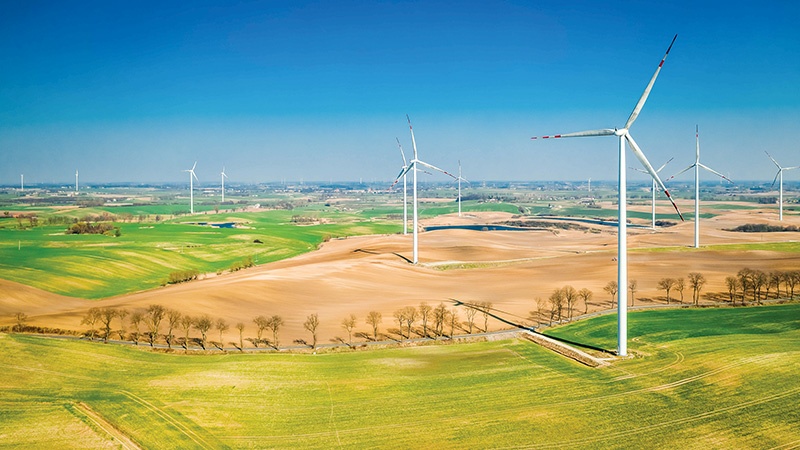Looming FiT deadline impels action
 |
| Over 140 wind projects would be eligible for the current FiT rate, but the deadline is a major hurdle for them. Photo: Shutterstock |
At last week’s meeting of the Ministry of Industry and Trade (MoIT), Hoang Tien Dung, director of the Electricity and Renewable Energy Authority said, “The MoIT is preparing a report to the prime minister on wind power projects under construction that may not be put into operation before October 31. There will be a mechanism through which the investor and the electricity buyer can negotiate a realistic purchasing price on the basis of investment and maintenance cost and the technical characteristics of the plant.”
The prime minister’s Decision No.39/2018/QD-TTg set the FiT for onshore wind power at 8.5 US cents per kWh and offshore wind power at 9.8 US cents for projects that reach a commercial operation date (COD) before October 31. Under the rules, more than 140 wind projects would be eligible for the rate, but many of these have been disrupted by the pandemic.
Dung denied commenting on questions about on extending the FiT after the October 31 deadline, but offered that the negotiations would provide a transitional solution to share the risks of investors before entering the bidding phase. However, the details of the mechanism are still unclear.
A wind power investor in the Mekong Delta province of Soc Trang who declined to be named told VIR, “Despite our best efforts to achieve commercial operations before the deadline, we are not sure if we will receive the current FiT. Information is also scarce about the price negotiations afterwards, which is a source of major concern for us. We need the government to be more forthcoming with details to ensure stability in wind power development in Vietnam.”
People’s committees of several provinces have tabled proposals to extend the current FiT for wing power because the pandemic has delayed the transportation and installation of wind turbines at many projects.
Liming Qiao, Asia director of the Global Wind Energy Council said, “We are watching an important moment in Vietnam’s history when things are taking unexpected turns. We see Vietnam emerging into the spotlight for global investors while the government has been embracing energy transition, especially solar and wind, in the past two years.”
However, Qiao added that policies do not align with reality at places as the draft Power Development Plan VIII targets lower wind power capacities than the previous draft.
Under the latest draft, onshore and near-shore wind power capacity will only be 11,820MW, 4,190MW than in the previous draft, while the offshore wind power target dropped from 3,000MW to about 2,000MW by 2030. This would make the total power output from wind reach 5.6-6.5 per cent of the country’s energy mix, much lower than the 8.1-10.3 per cent in the previous draft.
According to state-run Electricity of Vietnam, by the beginning of August, a total of 106 wind power plants had submitted dossiers to register for energising and grid connection, testing, and COD before October 31. The total registered test capacity of these plants is 5,655MW, scheduled to come online before the FiT deadline. However, as of August only 24 wind power projects were launched, with a total capacity of 963MW.
What the stars mean:
★ Poor ★ ★ Promising ★★★ Good ★★★★ Very good ★★★★★ Exceptional
Related Contents
Latest News
More News
- Heavy industries set for pilot greenhouse gas quotas (December 25, 2025 | 10:00)
- Swedfund invests in MSME growth and climate action in Vietnam (December 19, 2025 | 11:42)
- GreenYellow brings solar energy to light up remote schools in Tuyen Quang province (December 19, 2025 | 08:00)
- Charge+, Grab partner to develop EV charging network in Vietnam (December 18, 2025 | 17:11)
- Linking sci-tech and innovation to Vietnam’s net-zero future (December 18, 2025 | 14:31)
- Driving double-digit growth through green and circular transformation in Vietnam (December 17, 2025 | 09:00)
- Standard Chartered and ACCA deepen collaboration to develop Vietnam’s talent for a sustainable future (December 15, 2025 | 18:18)
- Schaeffler reports strong early output from Dong Nai solar project (December 12, 2025 | 15:16)
- Forestry conference highlights biodiversity and sustainability goals (December 09, 2025 | 13:35)
- Home Credit honoured among top 10 sustainable companies in trade and services (December 09, 2025 | 12:18)

 Tag:
Tag:





















 Mobile Version
Mobile Version